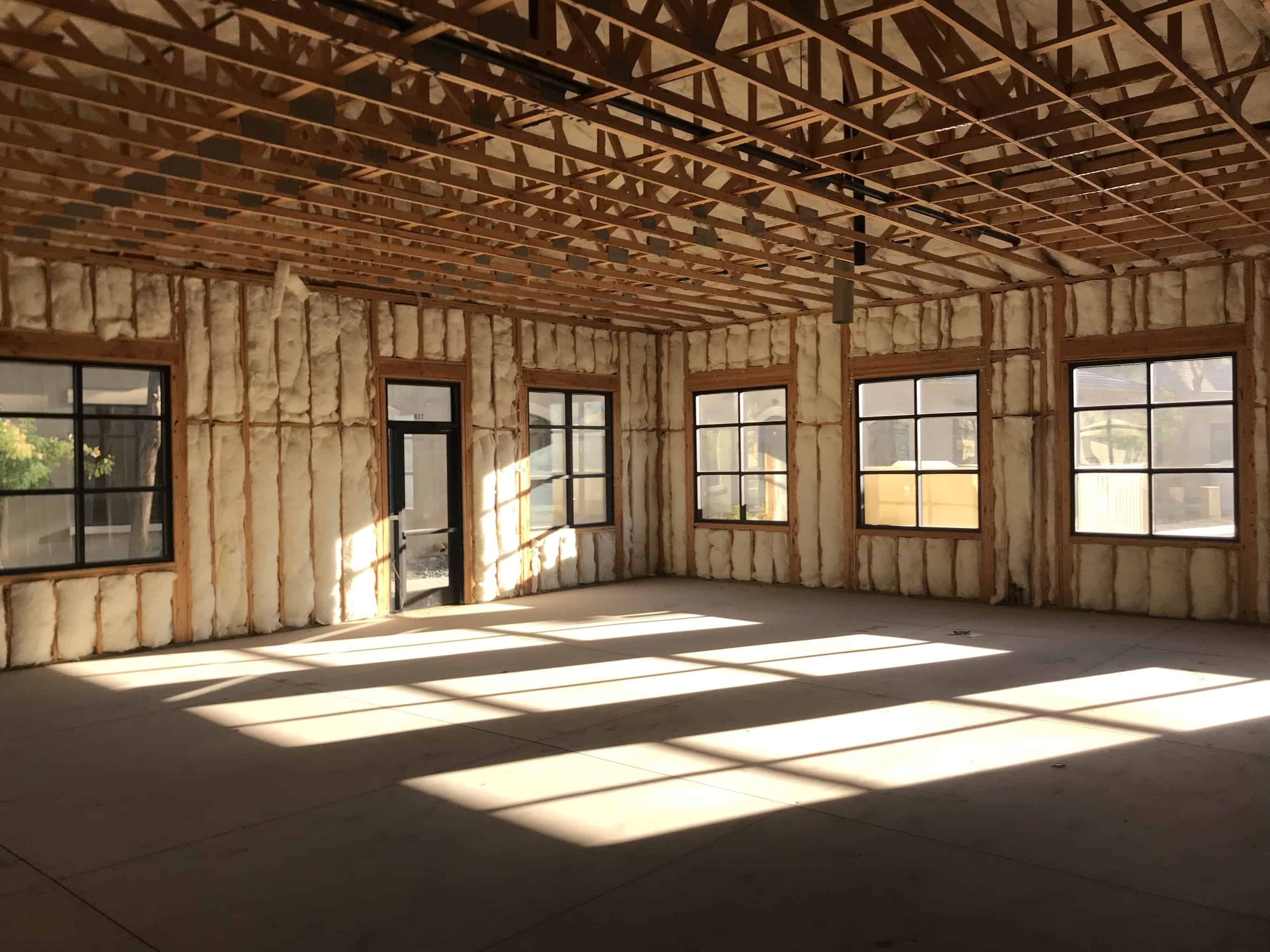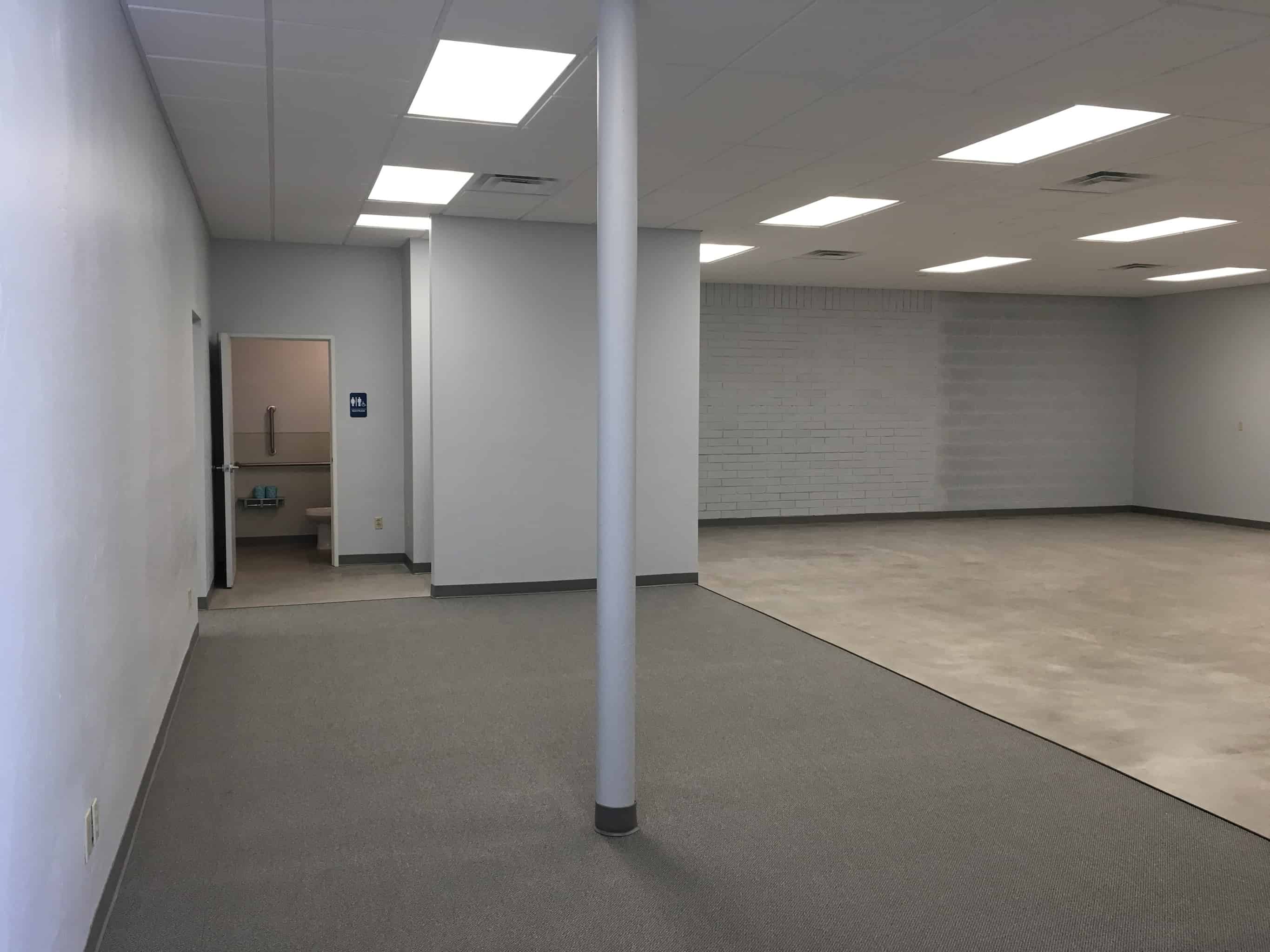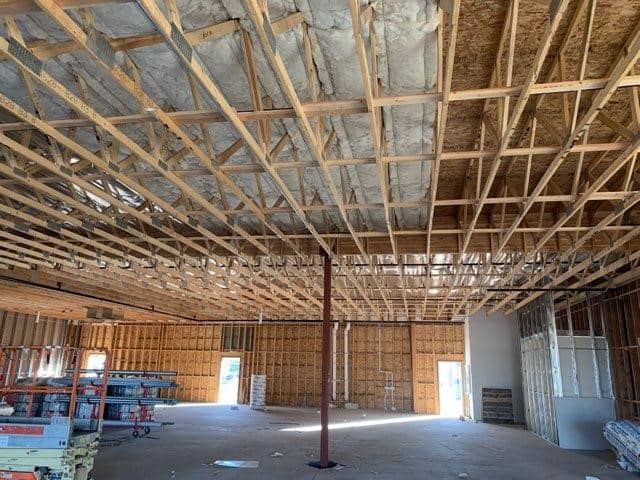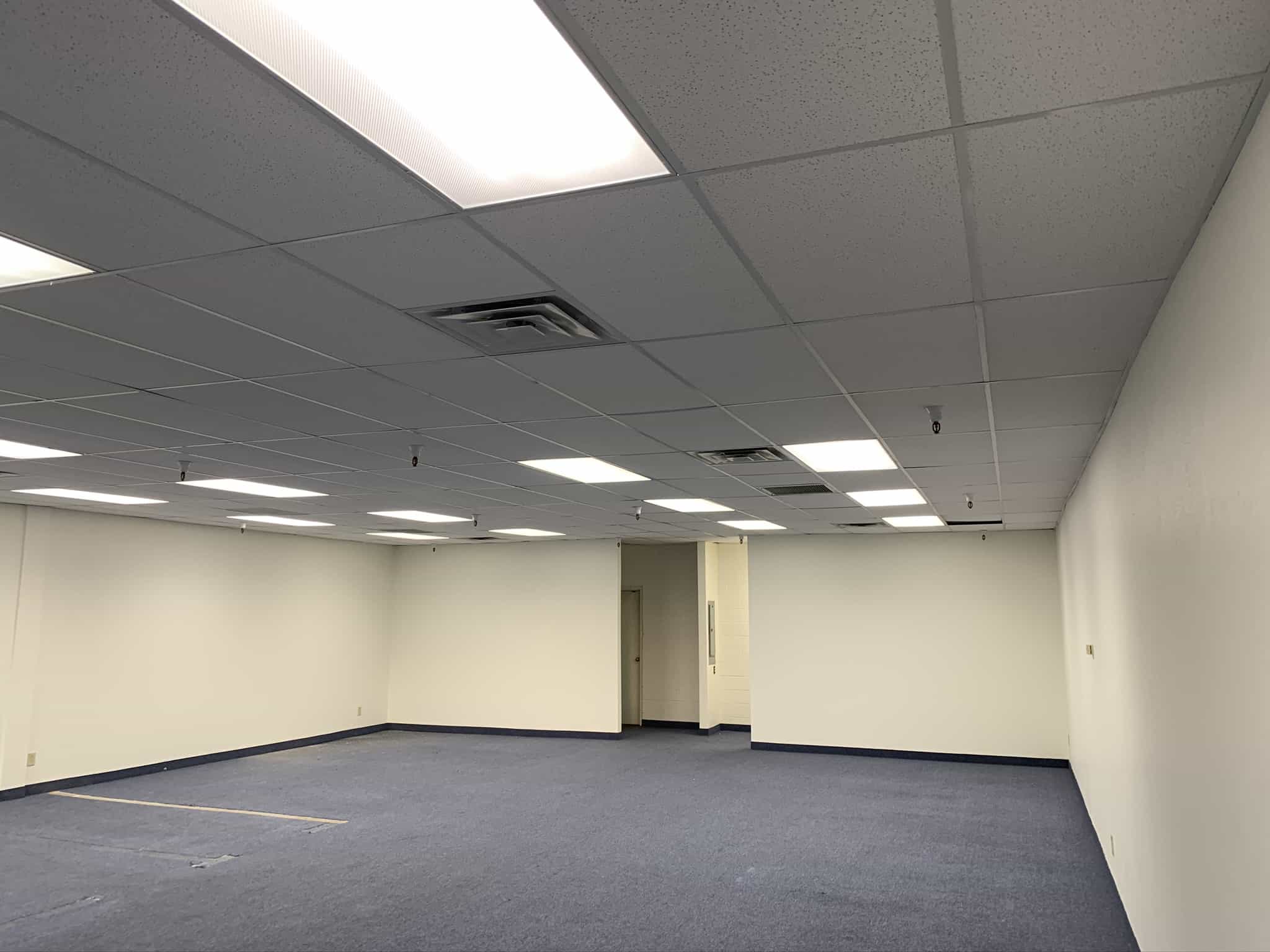
When searching for vacant commercial real estate, you’ll almost immediately hear the terms gray shell and vanilla shell. These labels describe the level of interior finish in a commercial space and play a major role in build-out costs, timelines, and design flexibility.
Whether you’re a business owner, commercial tenant, broker, property manager, or investor, understanding the difference between a gray shell and a vanilla shell in 2025 can help you avoid surprises, budget accurately, and move into your space faster.
Below, we break down what each shell type typically includes, current build-out cost ranges, and how to decide which option is right for your project.
What Is a Gray Shell Commercial Space?
A gray shell (sometimes called a cold shell) is a commercial space with little to no interior build-out. The name comes from the unfinished appearance—exposed concrete floors and structural elements are common.
What’s Typically Included in a Gray Shell
- Structural walls and roof
- Exterior doors and windows
- Utility stubs (water, sewer, electrical)
- Fire sprinkler mains (not distributed)
What’s Usually Not Included
- HVAC ductwork (the unit may exist, but air is not distributed)
- Drywall or finished interior walls
- Ceilings or ceiling grid
- Lighting
- Flooring
- Finished plumbing fixtures or restrooms

2025 Gray Shell Build-Out Costs
Because nearly everything must be built from scratch, gray shell build-outs generally cost more and take longer than vanilla shell spaces.
- Approximate range: $60–$120+ per square foot
- Costs vary based on:
- Local labor and material pricing
- Mechanical and electrical complexity
- Industry-specific needs (medical, restaurant, industrial, office)
Advantages of a Gray Shell
- Maximum flexibility in layout and mechanical design
- Ideal for specialized or highly customized spaces
- No wasted landlord investment in finishes the tenant may not want
Considerations
- Longer construction timeline
- Higher upfront construction costs
- Requires detailed planning and coordination with a general contractor

What Is a Vanilla Shell Commercial Space?
A vanilla shell (often called a warm shell) is further along in the construction process and includes many of the basic finishes needed to occupy the space.
What’s Typically Included in a Vanilla Shell
- Operational HVAC system with ductwork
- Drywall-installed interior perimeter walls
- Drop ceiling grid or drywall ceiling
- Overhead lighting
- Electrical outlets
- At least one ADA-compliant restroom
- White or neutral paint for a clean, move-in-ready feel
Some vanilla shells may also include basic office layouts or additional framed rooms, depending on the landlord and market.

2025 Vanilla Shell Build-Out Costs
- Light build-outs: $25–$40 per square foot
- Moderate to complex build-outs: $50–$70+ per square foot
Costs depend on how much of the existing layout and infrastructure can be reused.
Advantages of a Vanilla Shell
- Faster move-in timeline
- Lower overall construction costs
- Easier budgeting for standard office or retail tenants
Considerations
- Less flexibility if plumbing, electrical, or HVAC must be relocated
- Landlord may have invested in finishes that need to be removed or modified

Why Definitions Matter in Commercial Construction
In practice, gray shell and vanilla shell can mean slightly different things depending on the market, landlord, or broker. That’s why it’s critical for tenants, landlords, brokers, and contractors to align on exact expectations before pricing or construction begins.
Details that should always be clarified include:
-
Condition of the concrete slab (adhesives, coatings, or damage)
-
Scope of HVAC, electrical, and plumbing included
-
Responsibility for demolition or removal of existing materials
-
Permit and inspection responsibilities
A work letter or tenant improvement agreement should clearly define these items and act as the legally binding reference for the project.


Frequently Asked Questions: Gray Shell vs. Vanilla Shell
What is the difference between a gray shell and a vanilla shell?
A gray shell is a minimally finished commercial space that typically includes only the building structure and utility stubs, while a vanilla shell includes basic interior finishes such as drywall, ceilings, lighting, HVAC, and at least one ADA-compliant restroom. Gray shells offer more customization but require higher build-out costs and longer timelines.
Which is cheaper: gray shell or vanilla shell?
A vanilla shell is usually cheaper to build out than a gray shell because much of the basic infrastructure is already in place. In 2025, vanilla shell build-outs often range from $25–$70+ per square foot, while gray shell build-outs typically range from $60–$120+ per square foot, depending on complexity and location.
Does a vanilla shell include HVAC?
Yes, a vanilla shell typically includes a fully operational HVAC system with ductwork. However, the size, layout, and capacity of the system should always be verified, as modifications may still be required for certain uses.
How long does a commercial build-out take?
Timelines vary by scope and shell type. Vanilla shell build-outs may take as little as 6–10 weeks for light office or retail finishes, while gray shell build-outs often take 3–6 months or longer due to the need for full mechanical, electrical, and plumbing installation.
What industries benefit most from a gray shell?
Industries with specialized requirements—such as medical offices, restaurants, laboratories, and industrial users—often benefit from gray shell spaces because systems can be designed specifically for their operational needs.
Is a work letter necessary for tenant improvements?
Yes. A work letter clearly defines what is included in the shell condition, who is responsible for construction costs, and the scope of tenant improvements. It helps prevent disputes, delays, and unexpected expenses during the build-out process.
Final Thoughts
So, Which Shell Type Is Right for Your Business?
There’s no one-size-fits-all answer. The right choice depends on:
-
Your industry and operational requirements
-
Desired move-in timeline
-
Budget constraints
-
Long-term plans for the space
At Emerald Inc., we evaluate each project individually to develop accurate cost projections, realistic timelines, and efficient build-out strategies—whether you’re starting with a gray shell or a vanilla shell.
Ready to Start Your Arizona Build-Out or Remodel? Let’s talk about your project.
Whether you’re exploring budgets, design options, or a full remodel, our team will guide you through the process and deliver a tailored, accurate plan for your space.
Contact Emerald Inc. today to start planning your next project.
📞 Call us at 480-832-9808
📧 Email us to schedule a free consultation
👉 Let’s design a space that keeps customers coming back.

